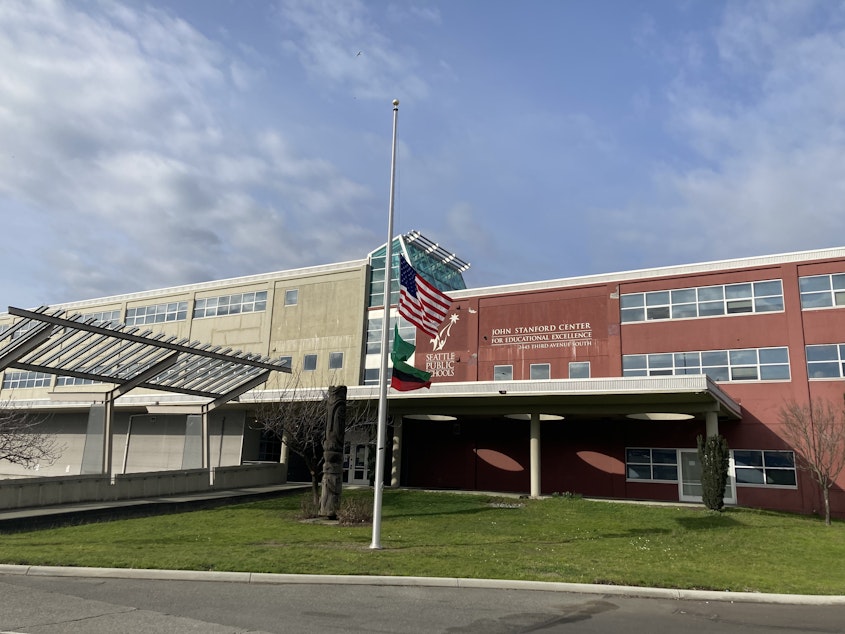Seattle Schools plan would drain rainy day fund to help cover $131M shortfall

Seattle Public Schools leaders unveiled their most detailed plan yet to stabilize the district’s precarious financial situation, including a $131 million budget gap next year.
“This is worthy of a drumroll, almost, that we do have a balanced budget plan for 23-24,” Superintendent Brent Jones told the Seattle School Board. “It was difficult; it was not easy to get here. But we do have a plan that balances out.”
Jones renewed his intention to keep cuts as far away from the classroom as possible, proposing cuts of nearly $32 million from the central office and about $10 million from staff and programs at the school level.
Jones also recommended the board pull about $42 million from a rainy day fund. The move would cover about a third of the budget shortfall. But it would completely zero out an emergency fund intended to protect critical programs if the district encounters unforeseen budget issues.
Fred Podesta, the district’s chief operating officer, admits the rainy day fund isn’t the ideal solution and it wasn’t intended to be used this way. But it does the job for now, he said, and the overall plan will set the district on a better financial path in years to come.
Sponsored
“Our current financial situation is not a rainy day thing — it’s weather. It’s a structural thing. It’s climate change,” Podesta told the board. “We are not reacting to a short-term, one-time thing, we are reacting to a new reality.”
Still, several school board members expressed some unease with emptying the fund. Board policy recommends it remains at a minimum of $33 million.
Podesta proposed a five-year repayment time where the district would contribute a minimum of $6.6 million annually.
To close next year’s shortfall, district leaders also will put an estimated $10 million in surplus funds and shift about $11 million of maintenance costs to the district’s capital fund, and use about $5.6 million of federal Covid relief funding.
Jones also credited district lobbyists’ efforts in Olympia to increase state education funding. It’ll bring the district an extra $20 million next year.
Sponsored
But Jones and other officials warned that more difficult financial times are ahead. He said the district will need to make long-term, systemic changes next year and beyond — like closing schools.
The board plans to take more public comment before a final vote on the budget in July.




